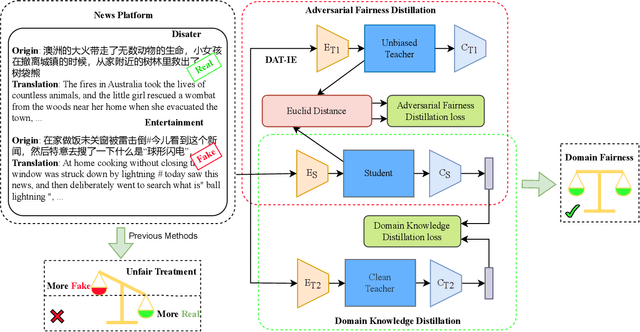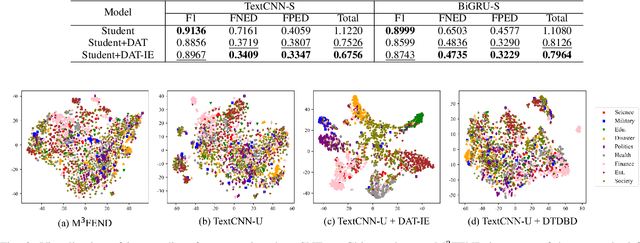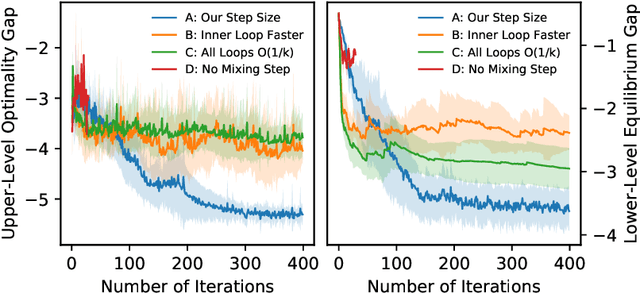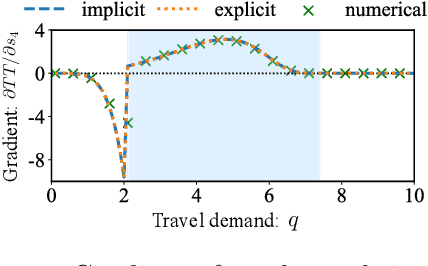Jiayang Li
Data Duplication: A Novel Multi-Purpose Attack Paradigm in Machine Unlearning
Jan 28, 2025Abstract:Duplication is a prevalent issue within datasets. Existing research has demonstrated that the presence of duplicated data in training datasets can significantly influence both model performance and data privacy. However, the impact of data duplication on the unlearning process remains largely unexplored. This paper addresses this gap by pioneering a comprehensive investigation into the role of data duplication, not only in standard machine unlearning but also in federated and reinforcement unlearning paradigms. Specifically, we propose an adversary who duplicates a subset of the target model's training set and incorporates it into the training set. After training, the adversary requests the model owner to unlearn this duplicated subset, and analyzes the impact on the unlearned model. For example, the adversary can challenge the model owner by revealing that, despite efforts to unlearn it, the influence of the duplicated subset remains in the model. Moreover, to circumvent detection by de-duplication techniques, we propose three novel near-duplication methods for the adversary, each tailored to a specific unlearning paradigm. We then examine their impacts on the unlearning process when de-duplication techniques are applied. Our findings reveal several crucial insights: 1) the gold standard unlearning method, retraining from scratch, fails to effectively conduct unlearning under certain conditions; 2) unlearning duplicated data can lead to significant model degradation in specific scenarios; and 3) meticulously crafted duplicates can evade detection by de-duplication methods.
WanJuanSiLu: A High-Quality Open-Source Webtext Dataset for Low-Resource Languages
Jan 24, 2025



Abstract:This paper introduces the open-source dataset WanJuanSiLu, designed to provide high-quality training corpora for low-resource languages, thereby advancing the research and development of multilingual models. To achieve this, we have developed a systematic data processing framework tailored for low-resource languages. This framework encompasses key stages such as data extraction, corpus cleaning, content deduplication, security filtering, quality evaluation, and theme classification. Through the implementation of this framework, we have significantly improved both the quality and security of the dataset, while maintaining its linguistic diversity. As of now, data for all five languages have been fully open-sourced. The dataset can be accessed at https://opendatalab.com/applyMultilingualCorpus, and GitHub repository is available at https://github.com/opendatalab/WanJuan3.0
MaeFuse: Transferring Omni Features with Pretrained Masked Autoencoders for Infrared and Visible Image Fusion via Guided Training
Apr 17, 2024Abstract:In this research, we introduce MaeFuse, a novel autoencoder model designed for infrared and visible image fusion (IVIF). The existing approaches for image fusion often rely on training combined with downstream tasks to obtain high-level visual information, which is effective in emphasizing target objects and delivering impressive results in visual quality and task-specific applications. MaeFuse, however, deviates from the norm. Instead of being driven by downstream tasks, our model utilizes a pretrained encoder from Masked Autoencoders (MAE), which facilities the omni features extraction for low-level reconstruction and high-level vision tasks, to obtain perception friendly features with a low cost. In order to eliminate the domain gap of different modal features and the block effect caused by the MAE encoder, we further develop a guided training strategy. This strategy is meticulously crafted to ensure that the fusion layer seamlessly adjusts to the feature space of the encoder, gradually enhancing the fusion effect. It facilitates the comprehensive integration of feature vectors from both infrared and visible modalities, preserving the rich details inherent in each. MaeFuse not only introduces a novel perspective in the realm of fusion techniques but also stands out with impressive performance across various public datasets.
Dual-Teacher De-biasing Distillation Framework for Multi-domain Fake News Detection
Dec 02, 2023



Abstract:Multi-domain fake news detection aims to identify whether various news from different domains is real or fake and has become urgent and important. However, existing methods are dedicated to improving the overall performance of fake news detection, ignoring the fact that unbalanced data leads to disparate treatment for different domains, i.e., the domain bias problem. To solve this problem, we propose the Dual-Teacher De-biasing Distillation framework (DTDBD) to mitigate bias across different domains. Following the knowledge distillation methods, DTDBD adopts a teacher-student structure, where pre-trained large teachers instruct a student model. In particular, the DTDBD consists of an unbiased teacher and a clean teacher that jointly guide the student model in mitigating domain bias and maintaining performance. For the unbiased teacher, we introduce an adversarial de-biasing distillation loss to instruct the student model in learning unbiased domain knowledge. For the clean teacher, we design domain knowledge distillation loss, which effectively incentivizes the student model to focus on representing domain features while maintaining performance. Moreover, we present a momentum-based dynamic adjustment algorithm to trade off the effects of two teachers. Extensive experiments on Chinese and English datasets show that the proposed method substantially outperforms the state-of-the-art baseline methods in terms of bias metrics while guaranteeing competitive performance.
Differentiable Bilevel Programming for Stackelberg Congestion Games
Sep 15, 2022



Abstract:A Stackelberg congestion game (SCG) is a bilevel program in which a leader aims to maximize their own gain by anticipating and manipulating the equilibrium state at which followers settle by playing a congestion game. Large-scale SCGs are well known for their intractability and complexity. This study approaches SCGs through differentiable programming, which marries the latest developments in machine learning with conventional methodologies. The core idea centers on representing the lower-level equilibrium problem using an evolution path formed by the imitative logit dynamics. It enables the use of automatic differentiation over the evolution path towards equilibrium, leading to a double-loop gradient descent algorithm. We further show the fixation on the lower-level equilibrium may be a self-imposed computational obstacle. Instead, the leader may only look ahead along the followers' evolution path for a few steps, while updating their decisions in sync with the followers through a co-evolution process. The revelation gives rise to a single-loop algorithm that is more efficient in terms of both memory consumption and computation time. Through numerical experiments that cover a wide range of benchmark problems, we find the single-loop algorithm consistently strikes a good balance between solution quality and efficiency, outperforming not only the standard double-loop implementation but also other methods from the literature. Importantly, our results highlight both the wastefulness of "full anticipation" and the peril of "zero anticipation". If a quick-and-dirty heuristic is needed for solving a really large SCG, the proposed single-loop algorithm with a one-step look-ahead makes an ideal candidate.
Inducing Equilibria via Incentives: Simultaneous Design-and-Play Finds Global Optima
Oct 12, 2021


Abstract:To regulate a social system comprised of self-interested agents, economic incentives (e.g., taxes, tolls, and subsidies) are often required to induce a desirable outcome. This incentive design problem naturally possesses a bi-level structure, in which an upper-level "designer" modifies the payoffs of the agents with incentives while anticipating the response of the agents at the lower level, who play a non-cooperative game that converges to an equilibrium. The existing bi-level optimization algorithms developed in machine learning raise a dilemma when applied to this problem: anticipating how incentives affect the agents at equilibrium requires solving the equilibrium problem repeatedly, which is computationally inefficient; bypassing the time-consuming step of equilibrium-finding can reduce the computational cost, but may lead the designer to a sub-optimal solution. To address such a dilemma, we propose a method that tackles the designer's and agents' problems simultaneously in a single loop. In particular, at each iteration, both the designer and the agents only move one step based on the first-order information. In the proposed scheme, although the designer does not solve the equilibrium problem repeatedly, it can anticipate the overall influence of the incentives on the agents, which guarantees optimality. We prove that the algorithm converges to the global optima at a sublinear rate for a broad class of games.
End-to-End Learning and Intervention in Games
Oct 26, 2020



Abstract:In a social system, the self-interest of agents can be detrimental to the collective good, sometimes leading to social dilemmas. To resolve such a conflict, a central designer may intervene by either redesigning the system or incentivizing the agents to change their behaviors. To be effective, the designer must anticipate how the agents react to the intervention, which is dictated by their often unknown payoff functions. Therefore, learning about the agents is a prerequisite for intervention. In this paper, we provide a unified framework for learning and intervention in games. We cast the equilibria of games as individual layers and integrate them into an end-to-end optimization framework. To enable the backward propagation through the equilibria of games, we propose two approaches, respectively based on explicit and implicit differentiation. Specifically, we cast the equilibria as the solutions to variational inequalities (VIs). The explicit approach unrolls the projection method for solving VIs, while the implicit approach exploits the sensitivity of the solutions to VIs. At the core of both approaches is the differentiation through a projection operator. Moreover, we establish the correctness of both approaches and identify the conditions under which one approach is more desirable than the other. The analytical results are validated using several real-world problems.
 Add to Chrome
Add to Chrome Add to Firefox
Add to Firefox Add to Edge
Add to Edge